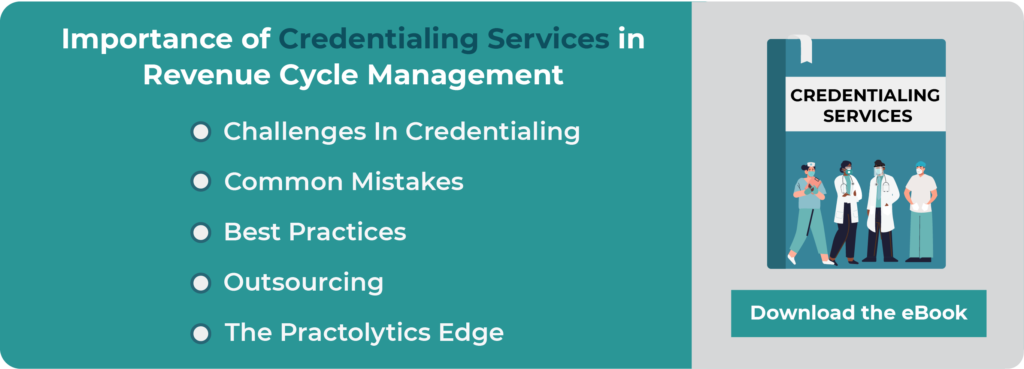Best Practices on How to Collect Patient Balance
It is not unusual to encounter difficulties in recovering your medical bills. Your patients may be financially stressed and unable to pay at the time of service, meaning that fee recovery may take a while. You may also be concerned that requesting your fees may hurt the long-term relationship you have built or plan on developing with the patient.
However, according to data published by CNBC in 2020, 32% of Americans owe a medical debt and more than half have defaulted on it. Research by AthenaHealth also revealed that practices only get 12% of the payment upfront and collect nothing 67% of the time. These insights highlight a trend in unpaid debts and the possibility that they won’t be recovered. To protect your practice from an oversized account receivable, this article will highlight ways to collect patient balances without hurting your relationship.
Table of Contents
How to Collect Patient Balance without Hurting Your Relationship
Financial Transparency
One reason why patients find it difficult to pay bills is a lack of awareness on what they are expected to pay. Your patients, after receiving treatment, may find it hard to pay an expensive, undisclosed bill. And to avoid problems, ensure you disclose all financial details at the point of registration. This way, you can refer to the agreed breakdown if issues arise.
Virtual Services
The spread of the coronavirus has impacted the usual ways of providing care. The pandemic necessitated an increase in the use of telehealth services, with patients getting waivers on cost-sharing. However, when waivers expire, patients may question charges for a telehealth service. It is important to explain the reason behind these charges when sessions are being booked.
Consider the Option of Upfront Payments
To secure cash inflows, your practice may look into the collection of payments upfront. However, an inherent challenge is the inability to determine what the patient will owe at the time of the visit. For instance, a routine follow up may result in a more demanding medical procedure. Bills could also rise when practitioners have to proffer more complex solutions than anticipated. The crux is to try to limit bills such that patients are not overcharged and your practice can refund them easily when the need arises.
Offer Patients a Payment Plan
The longer a payment is delayed, the higher the chance that it will lose value. Rather than wait to be paid, you could offer your patients the option of paying on an incremental basis. A recommended frequency is two to three times per month. This not only allows you to steadily recover your bill, but also enables the patient to reduce their debt. Additionally, refusing medical care due to expenses might prove disastrous to your patients. A payment plan option will therefore increase their access to care.
Make Post-visitation Calls
Calling your patients to request payment can be quite delicate. When making your calls, ensure that you apply courtesy and demonstrate care for their welfare. Also ensure that your invoice is filled with necessary details, such as the name of the provider, the location, the care provided, the amount paid by insurance and outstanding expenses, including the date you provided the service. These steps will help to reduce questions and create a better response to the debt. However, apply leniency with caution to prevent patients from expecting it at every turn.
Deploy Flexible Payment Options
Sometimes, your debts may be delayed due to the difficulty in paying it. If your practice deploys more accessible technology such as online payment options, you may record faster payments. It is important to consider the demographics of each patient as age may determine reception to different technologies. Thus, someone of the older generation might be comfortable with calls reminding them of their debt, while younger people might prefer links to a portal to pay their debts. You may also want to consider applicable laws to ensure that you are legally permitted to notify patients through channels such as text messages or emails.
Using a Credit Card
Your practice may also examine the option of a credit card, allowing you to implement charges once there is a responsibility. However, this method may require you to utilize data security measures to ensure that cardholder data is duly protected.
Have a Sufficient Number of Billers or Outsource
While the virus has affected staff sizes at various practices, employing fresh billers to handle patient volumes when the virus declines would be a plus. This enables you to follow up on bills and collect them on a timely basis. You may also want to outsource your RCM or revenue cycle management to hedge against fluctuations caused by virus waves. When engaging an RCM vendor, negotiate an easy-out contract, allowing you to split without penalties. Also, include terms that allow the vendor to only charge a percentage of debts they collect to motivate them to pursue returns. Practolytics offers a fair and transparent mechanism in collecting patient dues, sending reminders to patients, setting up payment plans based on practice guidelines, allowing the practice on one hand to maintain patient relationship and on the other hand ensuring practice financial health is maintained.
Train Front Office Staff
Your front desk personnel may find it difficult to request payments from patients. To make things easier, train your staff in effective communication techniques. This will enable them to request payments in a manner that is less likely to damage the relationship. Be sure to provide adequate monitoring such that requests align with best practice standards.
ALSO READ: Role of Front Office Staff In Keeping Your Practice and Financial Health Safe
Settlement
You may encounter patients who are experiencing financial strains. Protecting your relationship with them means you have to show compassion and understanding. Even more, you could request that they only pay a portion of the amount they owe. For instance, writing off a percentage of the total debt.
Review Outstanding Bill Payments
It is easy to lose track of outstanding payments especially when you have a busy schedule. However, it is important that you hold periodic reviews of debts with your billing staff to assess your revenue status. Doing this will help you strategize on new ways to recover debt and prevent it from bloating in future.
Use a Practice Management Software
Automating your financial systems can enable you to keep track of debts and alert patients on due dates. It also saves you the hassles of managing a paper-based system.
Conclusion
Requesting a balance from your patients can be dicey at first instance. However, recovering debts and keeping your practice afloat is a matter of processes and interpersonal methods. Developing in-house procedures that ensure timely payments will save you from most problems in the collection process.
CUSTOMER SUCCESS STORIES – Urgent Care Center Case Study
Talk to Medical Billing Expert Today — Get a Free Demo Now!






